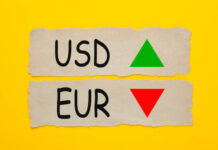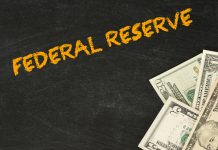Markets
Yesterday, core bonds remained under pressure. A further rise in 10-y Japan yields in the wake of this week’s BOJ decision also affected European and US bonds. Losses in US bonds accelerated after the Treasury announced its quarterly refunding scheme for this quarter with yields reaching intraday peaks after the announcement. The Fed as expected left the target range for the Fed fund rate unchanged. Economic activity is strong while unemployment stays low. With inflation running near 2%, the Fed maintained its intention of gradual further rate increases. The reaction of interest rate markets to the Fed statement was close to non-existent. At the end of the day, the US yields curve bear steepened with yields rising 0.8 bp (2-y) to 5 bp (30-y) However, this move was mainly driven by global sentiment and the refunding announcement. The German yields curve showed a similar but less outspoken move. Today, there are only second tier eco data in Europe. In the US, the jobless claims and the factory orders will be published. The reports might only be of intraday significance. This morning, the Japanese 10-y yield rose temporary to 14bp as markets tested the BOJ’s strategy after allowing more flexibility in bond market. The BOJ countered it with an offer to buy bonds (JPY 400 bln) to slow the rise in yields. For now, the price action in Japan caused no additional losses for US Treasuries. US bonds even receive some support as sentiment on risk turned negative in Asian on renewed trade war nervousness. This risk-off trade might slow the recent rise in US and core European yields going into tomorrow’s US payrolls report. However, especially the picture in the Bund future contract still looks fragile.
Yesterday, trading in the major USD cross rates was confined to tight ranges. Mixed US and EMU eco data gave no clear direction for EUR/USD trading. A modest rise in the US/German interest rate differential and renewed investor caution on some aggressive US-Chinese trade language finally gave the dollar the benefit of the doubt. EUR/USD closed the session at 1.1660 (from 1.1691). USD/JPY underperformed slightly. The yen was supported by the prospect for potential higher Japanese bond yields and by investor caution on trade. The Fed decision was not a big issue for USD trading. Today, the data won’t give much guidance for USD trading. Sentiment in Asia is turning risk off, supporting the USD (ex USD/JPY). In case of more risk-off today, EUR/USD might drift lower in the established range, but we don’t expect the dollar to breach key levels ahead of tomorrow’s payrolls. The EUR/USD 1.15/1.1850 range remains firmly in place with intermediate support at 1.1575. The USD/JPY rebound is running into resistance.
Yesterday, in technical trade, sterling basically trade sideways against the dollar and gained slightly ground against the euro. EUR/GBP closed the session again below 0.89. Today, the Bank of England is expected to raise the policy rate by 25 bp to 0.75%. However, BOE’s Carney will have some clarification to give as inflation is easing, growth remains mediocre and as Brexit uncertainty remains high. In this context a next BoE rate hike still looks very far away. We don’t expect a one-off BoE rate hike to give much of a lasting support for sterling.
News Headlines
The Bank of Japan has announced it will offer to buy 400 billion yen in Japanese Government Bonds in an attempt to keep it’s 10-year government yields under control. Since the BOJ’s announcement this Tuesday to allow debt markets to move more freely, the 10-year JGB yield had continue to increase to test the 0.140 % level.
The US and Mexico are making progress in key NAFTA talks, especially for the car making industry. Guillermo Malpica, head of the trade and NAFTA office for the Mexican government, said the US started showing more flexibility and a deal is getting closer.













